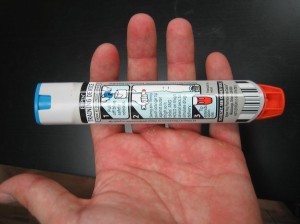Wheat allergy or often called as wheat intolerance affects many individuals in all corners of the globe. It is believed that an actual allergy to wheat is a rare condition and what is considered as an allergy is simply the intolerance of the body to the wheat proteins. Regardless of how this condition is perceived, the bottom line is that many experience the symptoms after exposure to wheat-based products. Whether it is an allergy or intolerance, it is important that you are prepared for the bodily reactions that will manifest so that appropriate measures can be provided right away.
How does wheat allergy develop?
An allergy to food such as wheat is not actually an allergy to the food but to the protein it contains. The body perceives this protein as a threat to the body and produces antibodies to fight it off. At this time, the symptoms will start to manifest.
There are proteins present in wheat that can trigger an allergic reaction among individuals who are allergic. Gluten is one of the main proteins that can cause the symptoms but other proteins such as gliadin can also cause the symptoms to manifest.
When to consult a doctor

It is important to seek immediate emergency care if the individual is experiencing difficulty swallowing or breathing right after consumption of wheat or wheat-based products. Even though this rarely occurs, this is a case of anaphylactic shock that includes wheezing, stomach upset, hives and skin rashes. During an anaphylactic shock, a shot of epinephrine is given by the doctor at the hospital. If the individual has an EpiPen, this can be used to provide epinephrine to help counteract the symptoms. A shot is given on the thigh of the individual that will help ease the symptoms.
Symptoms of wheat allergy
Take note that some of the symptoms of wheat allergy are different than the other types of food allergies. The sensitivity to gluten and gliadin can cause damage to the intestinal lining, resulting to the malabsorption of the essential nutrients needed by the body. The other symptoms can cause significant and even lasting effects. It includes anxiety, fatigue, depression, irritable bowel syndrome, headaches, skin rashes, acne and even arthritis.
It is best to consult a doctor regarding the advantages and disadvantage of sticking to a gluten-free diet. Once a diagnosis is confirmed, the doctor can recommend the elimination of all gluten from the diet. At first, this can be a difficult process since many foods contain wheat products. Do not forget to discuss ways to supplement the proper nutritional requirements.
Important considerations to bear in mind
Many individuals have reported significant changes in their energy levels, both in the physical and mental aspect after eliminating wheat from their diets. The products to watch out for include, but not limited to bran, high gluten flour, graham flour, farina, wheat malt, and wheat bran and wheat starch.
